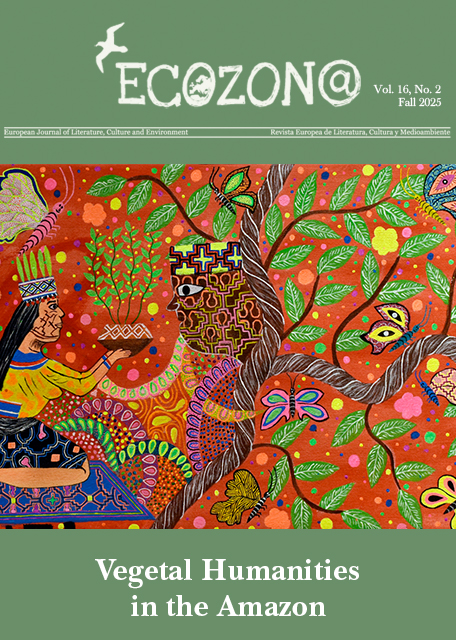<b>The Unreliability of Place Construction in Contemporary Alaskan Regional Writing</b> // La falta de fiabilidad en la construcción del lugar en la narrativa regional contemporánea de Alaska
DOI:
https://doi.org/10.37536/ECOZONA.2014.5.2.613Schlagworte:
Alaska, space and place, geographical imagination // Alaska, teoría del espacio y lugar, imaginación geográficaAbstract
Alaska’s geographic isolation results in the fact that most people experience the Far North only second-hand, commonly from the narratives of visitors. Those representations, overshadowed by myth, define Alaska as a region and reflect on the literary imagination of the 49th state. This paper analyses the reader’s image of Alaska and its inhabitants by tracing how regional narratives are perceived by scholars and reviewers, paying attention to the historically different transatlantic perceptions of indigenous peoples and Arctic nature. It becomes clear that Alaska as a setting, as described by its inhabitants, relies on imposed qualities that depend on the self-perception of the outside observer and not on the narration. The contested narrations of Velma Wallis and Sheila Nickerson help to position Alaska as a stage for the struggle over the spatial meaning carried out between outsiders. Conscious of this power struggle and its importance, these contemporary regional authors engage in the discourse over Alaska’s representation by narrating its unreliability. These authors produce texts that invite different readings to foster a cultural discourse about the meaning of the Alaskan place within the national identity and policies.
Resumen
El aislamiento geográfico de Alaska se debe al hecho de que la mayoría de las personas experimentan el extremo Norte sólo de segunda mano, normalmente a partir de los relatos de visitantes. Esta representación, eclipsada por una larga tradición de mitos, define a Alaska como región y se refleja en la imaginación literaria del estado 49º. Este artículo analiza el paradigma del lector de Alaska y de sus habitantes a través del estudio de cómo los estudiosos y críticos no-académicos perciben las narrativas acerca de dicha región, prestando atención a las percepciones transatlánticas históricamente diferentes de los pueblos indígenas y la naturaleza ártica. Es evidente que Alaska, como lugar descrito por sus habitantes, se basa en cualidades impuestas que dependen de la auto-percepción del lector foráneo y no en la narración. Los escritos de Velma Wallis and Sheila Nickerson colaboran en posicionar a Alaska como un escenario para la lucha sobre el significado espacial producido por los observadores foráneos. Conscientes de esta lucha por el poder y su importancia, estas autores regionales contemporáneas participan en este discurso narrando la falta de fiabilidad de la memoria, el lenguaje y la representación. En lugar de escribir en contra de la imaginación espacial, producen textos que sugieren lecturas que fomentan un discurso cultural acerca del significado de Alaska.
Downloads
Downloads
Veröffentlicht
Ausgabe
Rubrik
Lizenz
Authors who publish with this journal agree to the following terms:
a) Authors retain copyright and grant the journal right of first publication with the work simultaneously licensed under a Creative Commons Attribution License that allows others to share the work with an acknowledgement of the work's authorship and initial publication in this journal (CC BY-NC for articles and CC BY-NC-ND for creative work, unless author requests otherwise.
b) Authors are able to enter into separate, additional contractual arrangements for the non-exclusive distribution of the journal's published version of the work (e.g., post it to an institutional repository or publish it in a book), with an acknowledgement of its initial publication in this journal.
c) Authors are permitted and encouraged to post their work online (e.g., in institutional repositories or on their website) prior to and during the submission process, as it can lead to productive exchanges, as well as earlier and greater citation of published work (See The Effect of Open Access).










